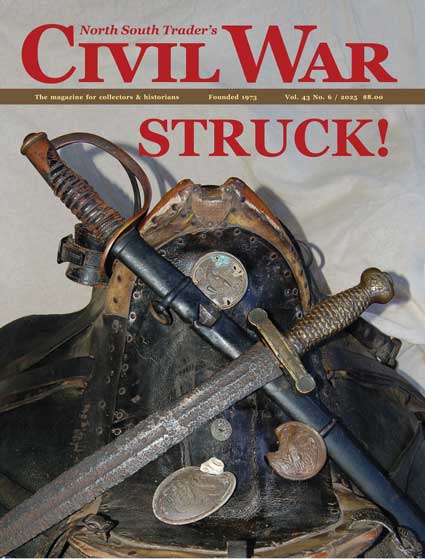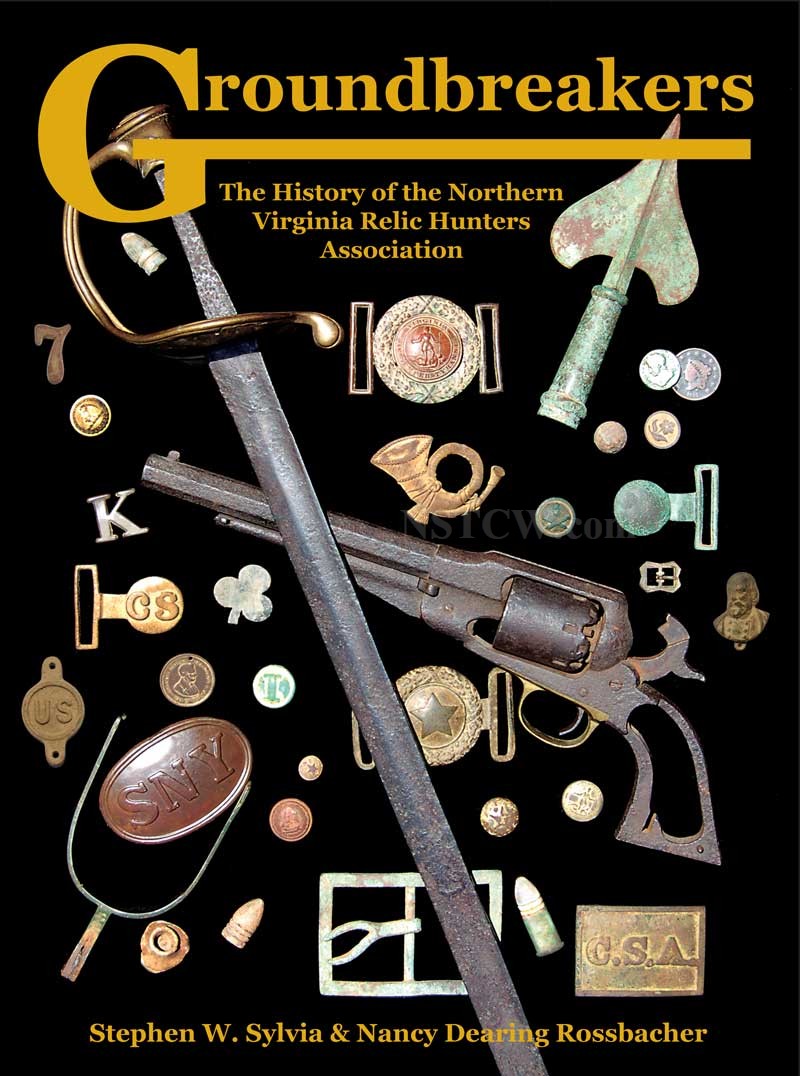|
Publisher's Forum Issue: 35-2 |
|
On January 1, 2011, the Civil War Sesquicentennial will begin in earnest. If the politically correct crowd has its way, it will be a far cry from the Civil War Centennial celebration of 50 years ago. Alas, many of those who have managed to assume positions of control of various state commissions are motivated by politics rather than history. It is ironic that 150 years after the greatest division in our nation's history, its very anniversary is experiencing divisiveness. Now, rather than North against South, it is the politically correct crowd versus anyone with a knowledge and love of Civil War history. Virginia witnessed the greatest proportion of military activity of any other state. As expected, Virginia is leading the nation in plans for the Sesquicentennial. Unlike the proud commonwealth of 1861, however, Virtus, stripped of her spear and her pride, will soon be lying prostrate next to Tyrannus. Delegate Bill Howell, speaker of Virginia's House of Delegates and Sesquicentennial Commission Chairman, says this time they want to take a different approach than that taken during the Centennial. “This is a commemoration. It's not a celebration,” he said. “I think 50 years ago there was primarily reenactments of battles and what we're trying to do is make it an education opportunity in Virginia.” Perhaps Delegate Howell misremembers the Centennial. I was a youngster during that era, and the Centennial was most definitely not a just a slew of reenactments, despite what a few revisionist historians may have led Howell to believe. I even recall the hoopla that presaged the Centennial. Articles about the last living veterans began appearing in newspapers and magazines in the late 1950s. Modern studies with fresh treatments of subjects such as Jim Bishop's The Day Lincoln Was Shot were being published with ever-increasing frequency as the Centennial neared. In 1960, Look magazine published MacKinlay Kantor's provocative article “If the South Had Won the Civil War,” which spawned international correspondence resulting in a full book-length treatment the following year. (Kantor's 1955 publication Andersonville won him the Pulitzer Prize.) The American Heritage company published its masterful 630-page Picture History of the Civil War in 1960, a work that has stood the test of time. Life magazine offered a memorable six-part series about the Civil War beginning in January 1961. Each installment was written by a different historian. Bruce Catton, Pulitzer Prize-winning author, narrative historian, and editor of the aforementioned American Heritage work, wrote the text for the first installment. Pulitzer Prize-winning poet, novelist, and literary critic Robert Pen Warren wrote another. Professor Bell Irvin Wiley, author of two dozen nonfiction Civil War books, wrote another segment, and two-time Pulitzer Prize-winning author Margaret Leech penned the installment on the home front. The information was accurate and thorough, the writing was superb, and the illustrations were fresh and provocative. The series proved to be a tour de force. National Geographic published a number of articles about Civil War sites and undersea recoveries. National Geographic also published at least one hardcover book about traveling through the South and comparing and contrasting then and now. I recall scores of other worthy presentations. Every form of media, from newspapers to radio, offered programs dedicated to the subject. Not to be outdone, Hollywood went full steam ahead. There were television series such as “The Grey Ghost” and “The Americans.” There were countless special programs and documentaries. From the late 1950s on, there were scores of film produced in anticipation of the coming 100th anniversary of the war. Ross Lockridge's epic Civil War tale “Raintree County” was filmed with megastars Elizabeth Taylor and Montgomery Clift. John Wayne starred in “The Horse Soldiers.” “Shenandoah” featured James Stewart in the leading role, Charleton Heston was “Major Dundee,” William Holden was “Alvarez Kelly,” and “How the West Was Won” starred everyone. “Gone With The Wind” was re-edited and rereleased amid a huge promotional campaign. Excitement and interest even extended to overseas. A French version of Ambrose Bierce's short story “An Occurrence at Owl Creek Bridge” won an award in Cannes in 1862 and garnered an Academy Award in the states in 1963. “The Good, Bad, and the Ugly,” shot in Italy, was released to both Italian and American audiences. These are but a few of the dozens of films produced during the Centennial era that capitalized on the public's voracious appetite for films of the Civil War genre. The tumultuous War Between the States had always been a popular subject for fiction and nonfiction works, but the Centennial spawned a deluge of books and provided an audience for scores of authors, from Bruce Catton and MacKinlay Kantor to Francis Lord and William A. Albaugh. A still-vaunted periodical also made its debut. Civil War Times Illustrated magazine became an instant success, providing a platform for historians and collectors across America. It's now 50 years later, and CWTI is still educating. The infant Civil War Round Tables' memberships exploded. The hobby of metal detecting received national publicity. Civil War trade shows were born. And the first attention placed on battlefield conservation since the founding of the National Park Service resulted from massive battlefield reenactments and visitations resulting from the Centennial jubilation. It was precisely the celebratory atmosphere of reenactments, parades, Blue & Gray balls, and the like that drew the media's attention. As a result of that initial attention, the public's curiosity was piqued and the Centennial snowballed from there. Had the Centennial been presented as a dry educational history experience, the nation's collective eyes likely would have glazed over and the Centennial would have fizzled very quickly. Yet despite the historical proof of the huge impact powered by the Centennial, Speaker Howell announces that it was “primarily reenactments” and the Sesquicentennial is going to be different because it will focus on “education.” Odd. The one I relished 50 years ago was an educational and cultural explosion. As a matter of fact, nothing could have been more educational and influential than the positive effect the Centennial had on the American consciousness. I believe it is that awareness that helped the average American become sensitive to the civil rights issues of the early 1960s. Our national immersion in portrayals of the past made the inequalities of the 1960s that much more evident. I believe the Centennial “celebration” is directly responsible for creating an atmosphere of awareness and embarrassment that made the Civil Rights Movement acceptable to the average white American. For anyone to dismiss the Centennial as a series of jubilant mock-battle funfests does a grave disservice to truth. Instead of criticizing that momentous celebration, members of the Virginia Sesquicentennial Commission would do well to study it and try their best to duplicate it. I hope Mr. Howell will yet recognize that the final act necessary to cement the union of the states is indeed something to celebrate, not simply commemorate. —Pub. The publisher welcomes correspondence from readers. NSTCW, P.O. Box 631, Orange, VA 22960 e-mail publisher@nstcivilwar.com |
| Past Publisher's Forums click an issue number to view |
| 43-6 |
| 43-5 |
| 43-4 |
| 43-3 |
| 43-2 |
| 42-3 |
| 42-3 |
| 42-3 |
| 42-3 |
| 42-3 |
| 41-6 |
| 41-5 |
| 41-1 |
| 40-5 |
| 40-4 |
| 40-3 |
| 40-1 |
| 39-6 |
| 39-5 |
| 39-4 |
| 39-3 |
| 39-2 |
| 39-1 |
| 38-3 |
| 38-2 |
| 38-1 |
| 37-6 |
| 37-5 |
| 37-4 |
| 37-3 |
| 37-2 |
| 37-1 |
| 36-9 |
| 36-6 |
| 36-5 |
| 36-4 |
| 36-3 |
| 36-2 |
| 36-1 |
| 35-6 |
| 35-5 |
| 35-4 |
| 35-3 |
| 35-1 |

